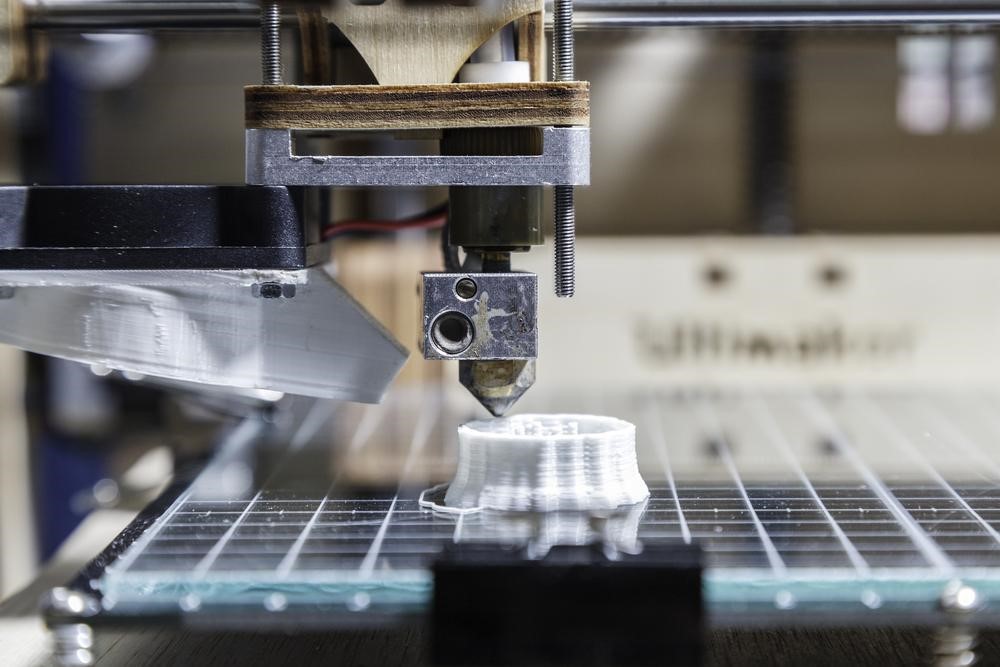fThere’s been a lot of buzz around 3D printing over the past several years. But this technology is steadily getting more advanced, and manufacturers across all different industries are starting to pay attention. Companies are turning to 3D printing as a way of speeding up the manufacturing process, reducing the cost of materials and improving energy efficiency.

3D printing isn’t just reserved for manufacturing small pieces of plastic; it can be used to generate large, complex items and tools that can help businesses save money and improve efficiency in more ways than one. Here are just five ways 3D printing can help create a more sustainable business model.
-
Reduced Waste
3D printing, also known as additive manufacturing, means creating a product from scratch. The printing machine layers materials on top of one another to create a product instead of carving a product out of a large piece of material, as is the case with subtractive manufacturing. For example, consider a clothing manufacturer that cuts a piece of clothing out of a large piece of fabric. With 3D printing, the manufacturer can use the machine to layer scrap pieces of fabric on top of one another, using as much of the fabric as possible, instead of letting the rest of the cloth go to waste.
Manufacturers can apply the same methodology to their process, regardless of what kind of product they need to create. They can use their leftover materials in the manufacturing process, instead of tossing them out in the trash.
3D printing is being used across a wide range of industries, including metals, plastics and engineering. A recent study shows that 3D printing can reduce the number of materials used in the manufacturing process by up to 90 percent. Companies can have more control over the manufacturing process by feeding individual materials into the machine. This reduces waste and helps leaders save money on their manufacturing materials.
If more companies start making use of 3D printing, we should see less waste overall. Fewer unused materials will end up in local landfills, creating a leaner, more sustainable economy.
-
Less Need for Manufacturing Materials

When companies don’t have to cut their products out of a large piece of material, they can make the most of their manufacturing materials. 3D printing gives companies the freedom to use nearly all their materials in the manufacturing process by creating items from scratch. This reduces the need for new materials in the first place.
While some suppliers and material manufacturers may lose business as a result of these changes, 3D printing has the potential to reduce the overall production of manufacturing materials. That means less plastic, metal, paper and fabric will be created over the next several years, keeping raw, natural materials in the earth to be used at a later date.
-
Less Required Energy
Since companies require fewer materials to develop and create their products, suppliers won’t have to generate as much material in the first place. This means these companies won’t have to use as much energy to meet the needs of their clients.
If more companies adopt 3D printing as part of their operations, suppliers across all industries will need to scale back their operations as a result. This will dramatically limit the amount of fuel and energy needed to produce manufactured goods.
Consider all the fuel used to create certain manufacturing materials such as fabric, plastic and metal. Then, these suppliers need to use shipping containers to transport these items to their clients. With 3D printing, companies can reduce the need for these materials, so their suppliers won’t have to use as much fuel to create and deliver these materials as they would if their clients were using subtractive manufacturing.
-
Time Saved During the Manufacturing Process
3D printing isn’t just about changing the way supplies are used in the manufacturing process. It’s also about simplifying the process all together. If a company needs a specific part to operate one of their machines or create a certain product, they can create it themselves in a fraction of the time it would take a traditional supplier to create and deliver the same part.
Companies can easily adjust and create individual items using a 3D printer without having to resort to costly, inefficient processes of the past. The 3D interface allows manufacturers to carefully shape and mold products to their individual specifications on a faster schedule. With a simplified, more reliable manufacturing process, companies can complete a job much faster than they used to, which reduces the amount of fuel and energy needed to create these products. That means fewer costly delays that can lead to additional energy usage, including lighting, transportation and express deliveries.

-
Refined Product Design
As the technology behind 3D printing continues to advance, companies can create complex 3D models that give them more control over the manufacturing process. This lets them easily refine their product design to make sure it is as cost-efficient as possible. Instead of rushing through the product design phase out of convenience, companies can easily use a 3D printer to simplify their designs so that they use less materials. They may find they can get by with fewer materials, saving them money on manufacturing supplies with every product they produce.
Engineers and designers can also use these new tools to make sure their products are more structurally sound. This means their customers can continue to use these products long after they purchase them instead of throwing them away after a few months and buying a new one. If one of the models isn’t up to the company’s standards, they can always recycle it and use it to create new products.
3D printing has come a long way since we first heard the term several years ago. Companies are using technology to improve their operations by reducing their need for materials, limiting their energy usage and creating better products. As this trend continues, 3D printing will continue to change the way products are manufactured all over the world.












Add Comment